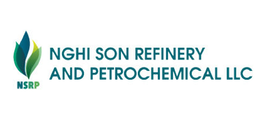• Minimizing impulses at the ejector due to pump operation, increasing the durability of equipment and pipelines
• Stabilize pump flow
• Reduced suction & discharge pressure loss
• Eliminates cavitation when chemicals have the following properties:
o High viscosity
o Chemicals with gas
o High volatility
Principle of operation:
 |
Types of Pulsation Dampers:
|
Without membrance |
With membrance |
| • Just an air tank • The operating pressure of pulsation damper cannot be adjusted • Some valves need to be added to regenerate the device during operation • After a period of operation, the gas is dissolved into the solution, reducing the pulsation damper efficiency |
• There is a membrane separating the gas and the solution • Operating pressure can be adjusted based on charging pressure • No need to add another valve system • Stable performance |
Installation diagram:
 |
Structure of Pulsation dampers:
 |
 |
Notes when using and installing pulsation damper:
• Selecting the right pulsation damper for the pump
• The material is suitable for the chemical to be dosed
• The position of the pulsation damper must be closest to the point where the oscillation is generated
• Easy-to-operate location with isolating valve for handling and maintenance
• Pipes and equipment do not rest on the pulsation damper
• Damping valve must be fixed
• Ensure full accessories for back pressure valve, pressure relief valve & pressure gauge
• Use only nitrogen gas (no oxygen) to charge the pulsation damper!
Other notes:
+ After 500hr of work, check the air pressure in the pulsation damper
+ After a test run or when stopped for a long time
+ Check the tightness of connections and performance through pressure gauges
Common problem and how to fix it:
+ Pump creates a loud echo while working
+ No damping effect
=> Additional gas charging
=> Replace new membrane






















